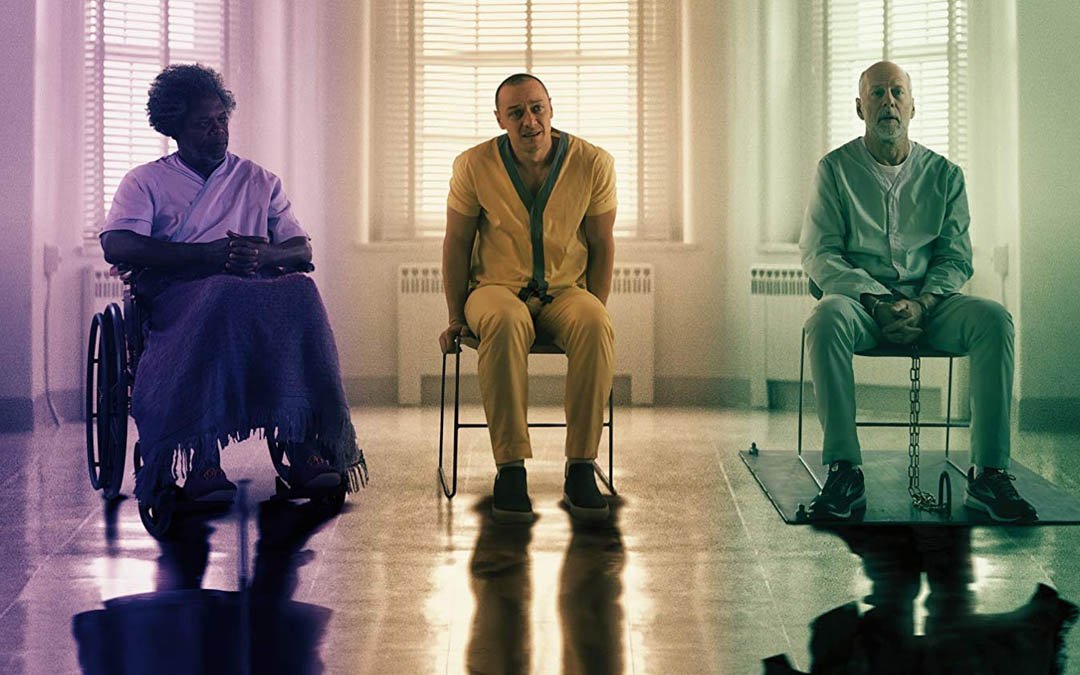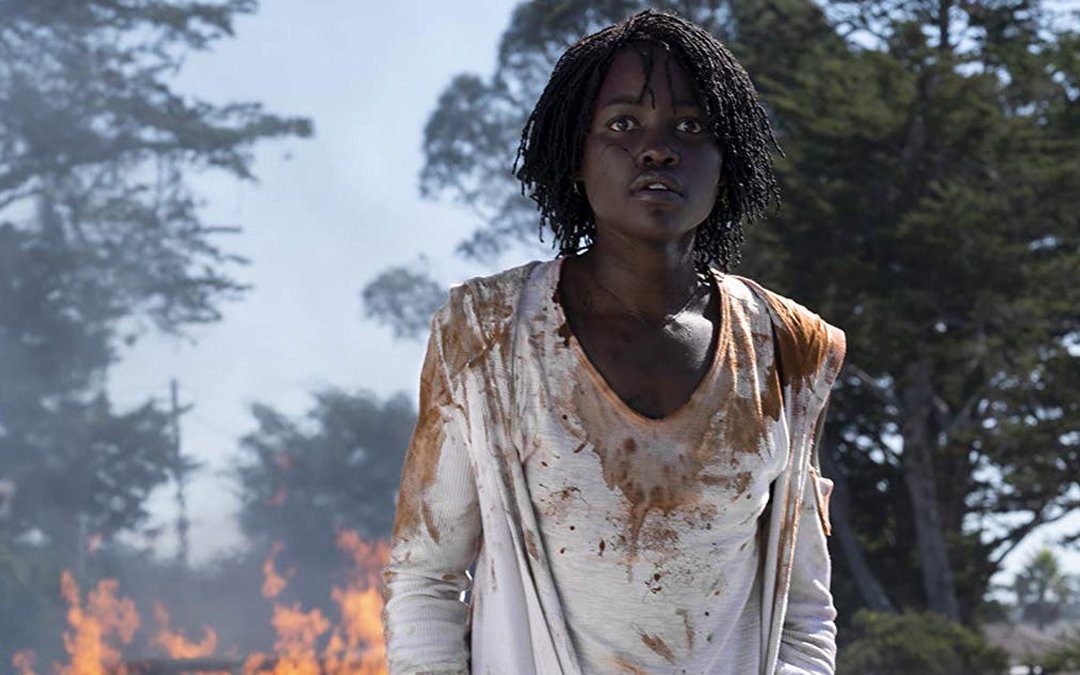All the Write Moves: 'Us'
March 25, 2019
After using a wild sci-fi conspiracy storyline to explore American race relations in his acclaimed debut film Get Out, writer-director Jordan Peele conjures a different sort of nightmare with his new picture, Us. This film’s trippy narrative, which concerns everyday people confronting violent replicas of themselves, doesn’t offer tidy explanations the way Get Out did.
In some ways, this makes Us an even riskier movie than Get Out, which meshed so many different genres that it could have become an incoherent jumble. Peele has said that one of his goals for Us was to pick a lane, cinematically speaking, and to make a straight up horror movie. Yet he’s far too sophisticated to deliver a routine shocker. What makes Us so bold is Peele’s refusal to bind the film to only one reading. Us takes viewers on an upsetting ride that could potentially lead to any of several destinations, each of which is awful in a different way.
Or does it? The most impressive accomplishment of Peele’s original screenplay may be that, according to one possible interpretation, it’s not a horror movie after all, but a metaphorical rumination on the darkness infusing everyday American society. Either way, Peele has demonstrated once again why his first movie immediately situated him among America’s top screenwriters. Rare is the film artist who can enlighten and entertain at the same time.
IN THE ZONE
It should come as no surprise that Peele has said one of the inspirations for Us was a vintage episode of The Twilight Zone, since Peele is the driving force behind an upcoming revival of that classic TV series. However, both of Peele’s movies owe a debt to Rod Serling, the creator of The Twilight Zone, because Get Out and Us reaffirm the powerful alchemy that occurs when dark fantasy gets blended with social commentary. Untethering storytelling from the limits of reality allows serious-minded storytellers to employ outrageous metaphors.
In Us, the central metaphor is that people have doppelgängers, which has long been a rich vein of fantasy narratives, as evidenced by myriad versions of Invasion of the Body Snatchers. Peele uses this notion in two different ways, thereby demonstrating how deft screenwriters utilize existing tropes. First, Peele exploits the doppelgänger concept to create a creepy home invasion sequence, with the family at the center of Us terrorized by mirror-image menaces. Peele twists familiar doppelgänger images just enough to make his first use of the trope feel fresh.
Then Peele digs deeper, revealing that the central characters of Us aren’t the only people with twisted replicas. This eventually allows Peele to unravel a sci-fi conspiracy even bigger in scope than the one he presented in Get Out, and the sheer size of the conspiracy lays the foundation for a statement about American society as a whole.
While the preceding paragraph is deliberately opaque so as to avoid spoiling plot elements, the useful insight for screenwriters should be apparent — if you lean on an existing plot device, as Peele does in Us, you should do so only if that provides a springboard to something bigger. Secondarily, if, like Peele, you groove on the paradigm that Serling perfected, by all means go there. When it works, reflecting society through a dark prism is extraordinarily powerful.
Takeaway: Dark fantasy and social commentary are uniquely compatible.
THE FAMILY THAT SLAYS TOGETHER
In the same way that Get Out got under viewers’ collective skin partly by placing horror sequences into the otherwise innocuous setting of America’s middle-class suburbs, Us turns bloody mayhem into a family activity. Not only do the doppelgängers rack up a huge body count, but the central characters — all of whom are portrayed as sympathetic people — notch plenty of kills. This underscores two important ideas that anyone attempting a horror script should remember. First, setting horror stories in places that are already frightening is cheap and convenient. Second, compelling audiences to cheer for violence committed by sympathetic characters creates a complicated viewing experience.
Regarding the matter of setting, note that any horror movie set in an obviously scary place — a haunted house, a morgue, whatever — allows the audience to build an invisible wall between the viewer and the movie. We brace ourselves for predictable onscreen terror just as we brace ourselves for predictable real-world terror. Conversely, horror that sneaks up on us from spaces we previously considered safe has a better chance of breaking through our defenses. The jolt we don’t expect rocks us much harder than the one we see coming.
Regarding the matter of getting audiences to celebrate violence by sympathetic characters, note that we’re conditioned by moviegoing experience to watch some scary stories like cartoons, whereas we watch others like “real” movies. Did anyone buy a ticket to last year’s Halloween sequel expecting a believable story? Of course not. Fans expected and received an over-the-top thrill ride. Flip side, think about grounded thrillers that edge into horror, such as Misery and The Silence of the Lambs. These pictures ask us to make emotional investments in characters, which has the result of making us wish for the characters’ survival, no matter the cost. We thus find ourselves in the moral quagmire of rooting for “good” people to essentially murder murderers.
In sum, the least interesting way to tell a horror story is to have a one-dimensional hero face off against a one-dimensional villain in some setting that screams obvious terror. The most interesting way to tell a horror story is to start in the normal world, and then, through circumstances and context, create a fraught environment in which the line separating good from evil becomes imperceptible.
Takeaway: Subverting comforting imagery yields disturbing results.
WHAT LIES BENEATH
These considerations inevitably lead to the topic of how Us ends, but, once again, every effort will be made to avoid spoiling the movie’s secrets. It’s enough for purposes of this discussion to say that the ending of Us throws into question whether the doppelgängers were ever evil, despite their commission of countless murders. Among other clues, consider that the title Us could just as easily be read as U.S., as in United States; at one point in the movie, a doppelgänger says of her kind, “We are Americans.”
As he did in Get Out, Peele uses his new movie to question society’s default perceptions. Viewers begin the Us experience confident that the central characters are “normal,” which is to say not evil. These characters are shown to have minor vices, such as materialism and selfishness, but these vices serve to add dimension to the characters, rather than to turn the audience against them.
However, once Peele finishes unraveling the movie’s master plan — which involves sewers and tunnels and other imagery related to peering below the surface — the final picture that emerges is troubling. Who are the true villains in this story, and who are the true victims? Peele offers clues upon clues that could lead to myriad different answers for these questions. And that’s the point.
Whereas lesser filmmakers ask viewers to receive blatant one-way messages, Peele asks viewers to participate in decoding two-way messages. He therefore implies that what the audience takes from Us is as valid as anything he put into the movie.
Takeaway: Cryptic expressions of theme can deepen audience engagement.
Written by: Peter Hanson
Peter Hanson is a Los Angeles-based writer, filmmaker and teacher. He directed the screenwriting documentary Tales from the Script, and he teaches at Pepperdine University and UCLA Extension. He provides script consulting at www.GrandRiverFilms.com.- Topics:
- Discussing TV & Film




